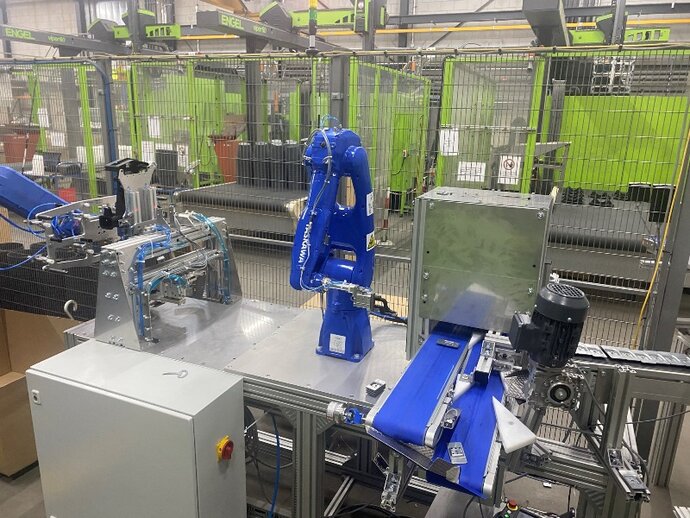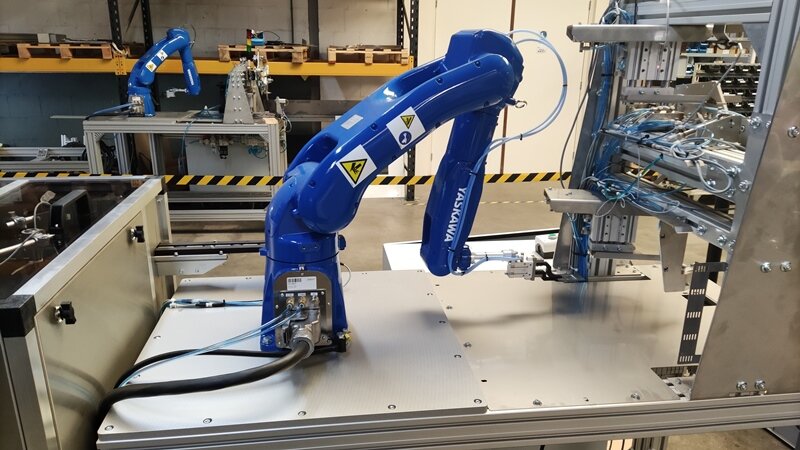Paras laatu yhdistettynä poikkeukselliseen suorituskykyyn.
Robot offers solution for complex products with accurate finishing
One of the system integrators that Yaskawa Benelux works with is ZEST Innovate, located in Eindhoven. This past year, ZEST completed a project using three Yaskawa robots. ZEST carried out this project on behalf of Alligator Plastics, also located in Eindhoven, producer and developer of plastic injection molding products.
ZEST markets innovative systems and devices for its customers. ZEST can turn ideas into reality through business improvement, development and financing. The development consists of the use of HMI, design and mechatronics, always with a view to the greatest possible success of the device in the market. Special machines are mainly built for the Dutch manufacturing industry, whereby ZEST makes use of years of experience to make the customer's production better, more efficient and therefore cheaper.
- Toimialat
- Kemikaali- ja muoviteollisuus
- Sovellukset
- Assembly
- Asiakasohjelma
- ZEST Innovate
- Tuotteet
- GP7 - GP-Sarja
Accessible
ZEST had originally thought of using cobots for this project. However, through conversations with Yaskawa, ZEST came to the conclusion that a standard robot was better for this purpose than one of the cobots in the range. Preference was given to a local robot producer and another customer had experience with Yaskawa robots. “Yaskawa turned out to be very accessible,” said Cyrille Gradus, Commercial Director at ZEST. “That's why we chose Yaskawa.”
For one of its customers Alligator Plastics produces, among other things, injection molded products for power supply, specifically for green power. During the development of a new product range, the wish arose to mount a metal plate, provided with screw thread, in the product in order to guarantee a sufficiently firm fixation of the end product. ZEST was approached for this mechanization project and it was decided, due to the complexity of the product, the required speed of positioning and the difficult position where the metal had to be placed, that the best option was to do this using 6-axis robots. to do.
Complex system
“It has become a fairly complex system. The finishing position of the robot goes quite deep into the product, so we put a long gripper on it,” says Rens van Hulst, Automation Software Engineer. “With a vision system with which we initially had the parts run under the camera on a conveyor belt. The robot stood at the end of the conveyor belt to take the parts off and place them in the product.”
In practice, it turned out that products regularly got stuck on the conveyor belt and the tilting of the products did not always go smoothly. Ultimately, a vibratory filler is now used, so that the products always end up in the same place. “In this way we only have to teach the robot one position,” continues van Hulst. “The robot gets a signal and then picks it up, a much better solution.”
Vibrating filler
With the original system, there was an area where the robot chose a pick position based on the camera. It moved with the speed of the conveyor belt. “Now with the final system, the plate comes out of the vibrating filler and our system ensures that it is pushed in a certain direction so that it always remains in the same position. Then we send a signal to the robot and it picks it up. On the other side, where the product has been delivered from the injection molding machine, the plate that has been picked up from the conveyor belt will be placed,” says van Hulst. There are two deposit positions and according to the deposit position requested, the robot will move left or right. This happens four times with each injection molding round, after which the four products on the other side are picked up by the robot and the process starts again.
Light products
The Yaskawa GP7 handling robot was chosen for this system, a fairly small variant because it works with light products of a few hundred grams. One robot is used per machine, but three different machines have been delivered to the customer, so a total of three GP7 robots are used.





















